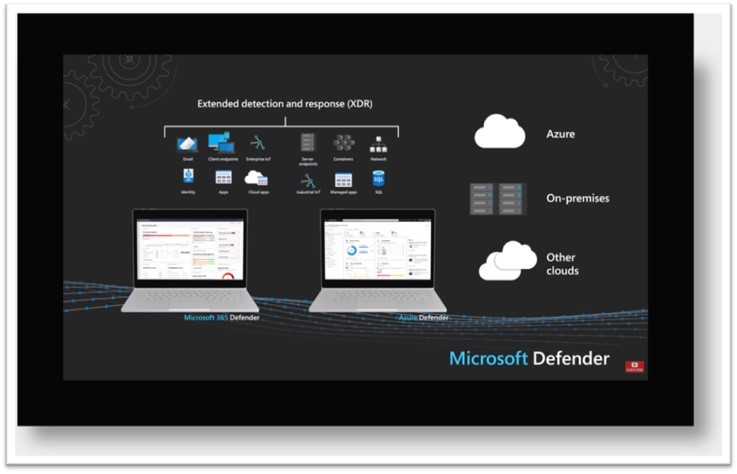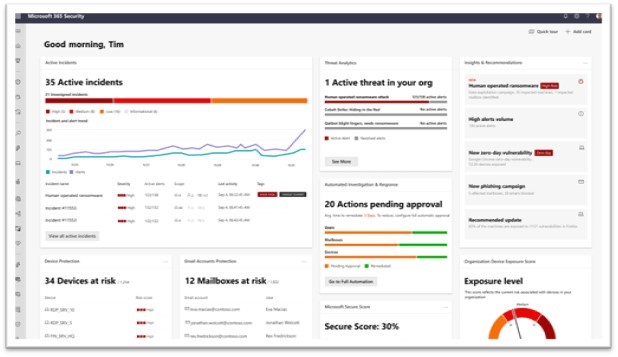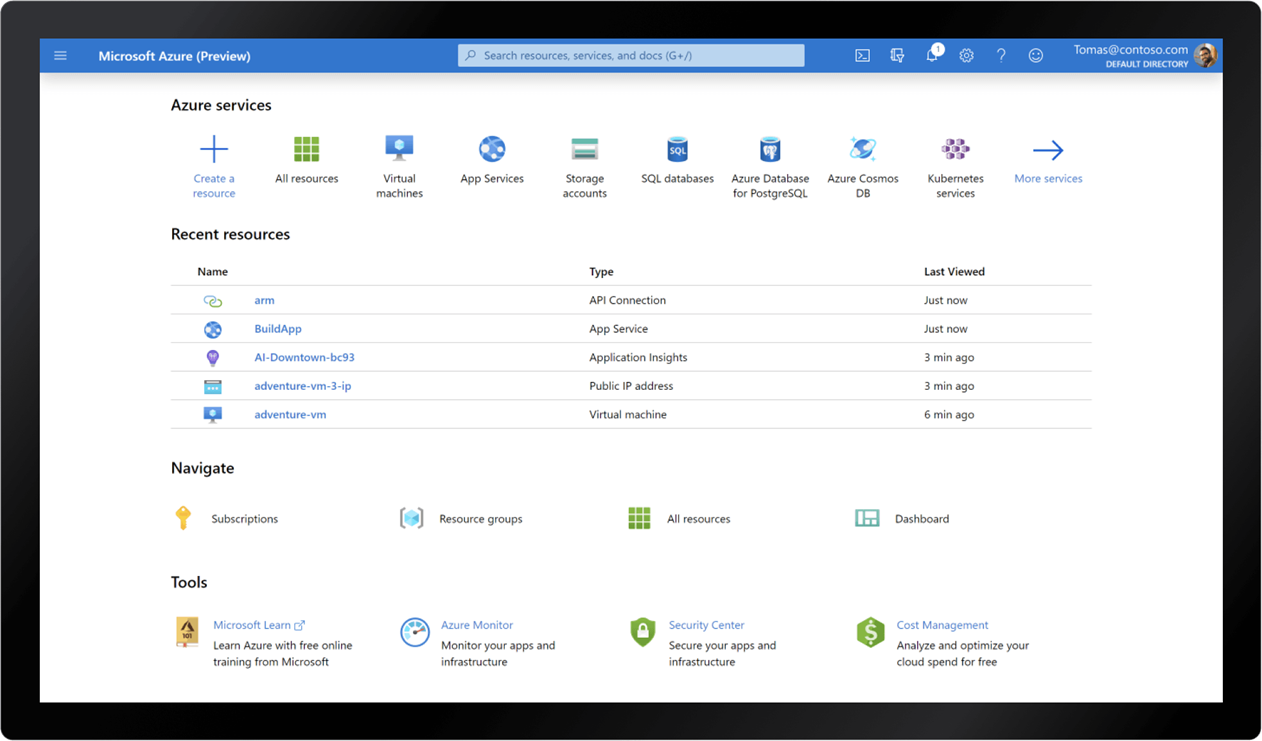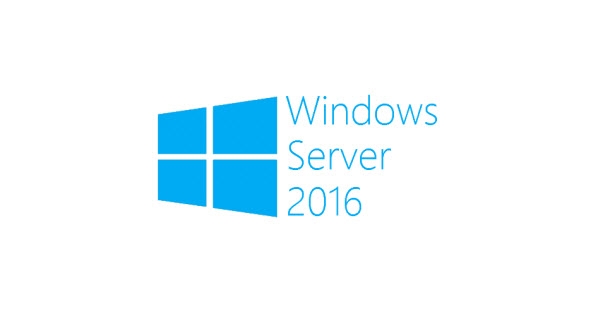Sep 8, 2021
Microsoft is announcing changes to the commercial pricing for Microsoft 365—the first substantive pricing update since they’ve launched Office 365 a decade ago.
This updated pricing reflects the increased value Microsoft has delivered to its customers over the past 10 years.
Take a look at some of the innovations they’ve delivered over the past decade in three key areas—communications and collaboration, security and compliance, and AI and automation—as well as the addition of audio conferencing capabilities that they’re announcing today.
A decade of continuous innovation
Since introducing Microsoft 365 they have added 24 apps1 to the suites—Microsoft Teams, Power Apps, Power BI, Power Automate, Stream, Planner, Visio, OneDrive, Yammer, and Whiteboard—and have released over 1,400 new features and capabilities in three key areas.
→ Communication and collaboration.
In 2020 Microsoft released over 300 new capabilities including Together mode, background effects, large gallery view, raise a hand, live reactions, breakout rooms, live captions with speaker attribution, and Fluid components, just to name a few.
- They introduced a new category of collaborative applications in Teams, empowering people and organizations for hybrid work through deep integrations with Power Platform, Whiteboard, Lists, Planner, Shifts, Forms, and SharePoint. Companies like Adobe, Atlassian, Salesforce, SAP, ServiceNow, and Workday have built apps that deeply integrate with Teams, bringing business processes and functions directly into the flow of work.
- They continue to innovate on both real-time and asynchronous collaboration.
- They introduced real-time collaboration in Word, Excel, and PowerPoint desktop apps while a growing set of capabilities like @mentions, assign tasks, modern comments, and auto-save have streamlined the collaboration experience.
- They’ve added and expanded OneDrive cloud storage and the Exchange Online mailboxes.
→ Security and compliance.
- The cybersecurity landscape is more complex than ever. With the accelerating volume, sophistication, and scale of cyberattacks, security and compliance are a priority for every organization. Since they first introduced Microsoft 365, they have added new attack surface reduction capabilities to help organizations defend against ransomware and other threats.
- They have added capabilities like data loss prevention (DLP) for email and documents, sensitivity labels, and message encryption to help keep important data within the organization.
- They have added powerful compliance capabilities that help organizations reduce risk and respond to increasing regulatory requirements such as Content Search, eDiscovery, and core Litigation Hold. Built-in mobile device management (MDM) and other management tools like Microsoft Endpoint Manager help admins support remote and hybrid workforces.
→ AI and automation.
- Over the past decade, they have infused AI capabilities across our productivity and collaboration applications to help everyone achieve more.
- Across Microsoft 365, they have introduced AI-powered innovations to help users be better writers, designers, and presenters.
- Cloud-powered AI now automatically creates maps, charts, and tables in Excel, and sorts email and removes clutter in Outlook. And AI-powered real-time translation, captions, and transcription make collaboration and communication more accessible and engaging for everyone.
Extending audio conferencing capabilities
- Microsoft is announcing that they will add unlimited dial-in capabilities for Microsoft Teams meetings across our enterprise, business, frontline, and government suites over the next few months. Even as cloud connectivity increases, they know that people join Teams meetings while they are on the go or struggling with a bad internet connection.
- Currently included with Microsoft 365 E5 and Office 365 E5, they have come to see dial-in as an important part of the complete Teams experience.
- Available with subscriptions in over 70 countries and with interactive support in 44 languages and dialects, unlimited dial-in provides peace of mind that users will be able to join their Microsoft Teams meeting from virtually any device regardless of location.
New pricing
- The pricing changes Microsoft is announcing today will go into effect in six months.
- On March 1, 2022, they will update our list pricing for the following commercial products: Microsoft 365 Business Basic (from $5 to $6 per user), Microsoft 365 Business Premium (from $20 to $22), Office 365 E1 (from $8 to $10), Office 365 E3 (from $20 to $23), Office 365 E5 (from $35 to $38), and Microsoft 365 E3 (from $32 to $36).
- These increases will apply globally with local market adjustments for certain regions.
- There are no changes to pricing for education and consumer products at this time.
- As leaders around the world look to empower their people for a more flexible, hybrid world of work, it’s clear that every organization will need a new operating model across people, places, and processes. Microsoft is committed to building on the value they’ve delivered over the past decade to continuously provide innovation that helps our customers succeed and thrive today and well into the future.
Click to learn more
Contact us to learn more [email protected]
Dec 2, 2020
To help organizations protect all their assets against evolving digital security threats, Microsoft is unifying all Extended Detection and Response (XDR) technologies under the Microsoft Defender brand.
Microsoft Defender prevents, detects, and responds to threats across identities, endpoints, applications, email, IoT, infrastructure, and cloud platforms.
With Microsoft Defender, Microsoft is rebranding the existing threat protection portfolio and adding new capabilities, including additional multi-cloud (Google Cloud and AWS) and multi-platform (Windows, Mac, Linux, Android, and iOS) support.
Microsoft Defender is delivered in two tailored experiences:

Microsoft 365 Defender
- Microsoft 365 Defender delivers XDR capabilities for identities, endpoints, cloud apps, email, and documents.
- It uses artificial intelligence to reduce the SOC’s work items.
- Built-in self-healing technology fully automates remediation more than 70% of the time, ensuring defenders can focus on other tasks that better leverage their knowledge and expertise.
The branding changes to unify the Microsoft 365 Defender technologies:
- Microsoft 365 Defender (previously Microsoft Threat Protection)
- Microsoft Defender for Endpoint (previously Microsoft Defender Advanced Threat Protection)
- Microsoft Defender for Office 365 (previously Office 365 Advanced Threat Protection)
- Microsoft Defender for Identity (previously Azure Advanced Threat Protection)
New features available within Microsoft 365 Defender:
- Extending mobile threat defense capabilities in Microsoft Defender for Endpoint to iOS, Android and macOS.
- Priority account protection in Microsoft Defender for Office 365 will help security teams focus on protection from phishing attacks for users who have access to the most critical and privileged information.
Customers can customize prioritized account workflows to offer these users an added layer of protection.

Microsoft 365 Defender
Azure Defender
Azure Defender delivers XDR capabilities to protect multi-cloud and hybrid workloads, including virtual machines, databases, containers, IoT, and more.
Azure Defender is an evolution of the Azure Security Center threat protection capabilities and is accessed from within Azure Security Center.
Microsoft has announced brand changes for these capabilities under Azure Defender as well:
- Azure Defender for Servers (previously Azure Security Center Standard Edition)
- Azure Defender for IoT (previously Azure Security Center for IoT)
- Azure Defender for SQL (previously Advanced Threat Protection for SQL)
New features now available within Azure Defender:
- To help defenders identify and mitigate unprotected resources, Microsoft is delivering a new unified experience for Azure Defender that makes it easy to see which resources are protected and which need further protection.
- Added protection for SQL servers on-premises and in multi-cloud environments as well as virtual machines in other clouds, and improved protections for containers, including Kubernetes-level policy management and continuous scanning of container images in container registries.
- Support for operational technology networks with the integration of Cyber X into Azure Defender for IoT.
Nov 18, 2020

Azure adds new constrained vCPUs, capable virtual machines to reduce software licensing costs without impacting performance
Azure offers various VM sizes for which you can constrain the VM vCPU count to reduce the cost of software licensing, while maintaining the same memory, storage, and I/O bandwidth.
This may be crucial for some database workloads like SQL Server or Oracle that require high memory, storage, and I/O bandwidth, but not a high core count since many database workloads are not CPU-intensive.
So, by deploying the latest Azure Virtual Machines, you can further increase the efficiency of your cloud infrastructure.
The vCPU count can be constrained to one half or one quarter of the original VM size. These new VM sizes have a suffix that specifies the number of active vCPUs to make them easier for you to identify.
The Esv4, Edsv4, and Easv4 memory optimized Azure VM series now offer new constrained vCPU VM sizes.
For example, the current VM size ‘’E8s_v4’’ comes with 8 vCPUs, 64 GB RAM, 16 disks and 12,800 IOPs. The new VM sizes ‘’E8-4s_v4’’ and ‘’E8-2s_v4’’ comes with 4 and 2 active vCPUs respectively, while maintaining the rest of the specs of the ‘’E8s_v4’’ for memory, storage, and I/O bandwidth.
The licensing fees charged for SQL Server or Oracle are constrained to the new vCPU count, and other products should be charged based on the new vCPU count. This results in a 50% to 75% increase in the ratio of the VM specs to active (billable) vCPUs. These new VM sizes allow customer workloads to use the same memory, storage, and I/O bandwidth while optimizing their software licensing cost. Currently, the compute cost, which includes OS licensing, remains the same one as the original size.
Nov 16, 2016

As it is known in Microsoft SPLA, SharePoint Server Standard and Enterprise licenses are provided under the Subscriber Access License, which means that each end customer’s internal users who can directly or indirectly access the SharePoint Server would need a license. Service Provider will use the software in this case to provide internal users access to content, information, and applications. Therefore, use of SharePoint Server software to provide content, information, and applications that are limited to internal users must be licensed under SharePoint Server SALs.
SharePoint Hosting – Licensing Based on Processors Used
In contrast and in order to provide SharePoint Server as a Website or Hosted and therefore, allowing an unlimited number of external users to access it, in this case, the licensing scheme would shift from SAL to Processor License. Customer may use the software to provide External Users access to content, information, and applications. Customer may also use the software to provide internal users access to content, information, and applications so long as that same content and information and those same applications are also accessible by External Users.
To run Instances of the server software in the Physical OSE on a Server, you need a license for each physical processor that the Physical OSE uses.
To run Instances of the server software in the Physical OSE on a Server, you need a license for each physical processor that the Physical OSE uses.
Scenario 1
SharePoint Hosting roles are deployed on 1 physical server with 2 physical processors. Therefore, in this case, SharePoint Hosting would require a total of 2 licenses equal to the number of physical processors.
To run Instances of the server software in Virtual OSEs on a Server, you need a license for each virtual processor that each of those Virtual OSEs uses. If a Virtual OSE uses a fraction of a virtual processor, the fraction counts as a full virtual processor.
Scenario 2
SharePoint Hosting roles are deployed on 1 Virtual Machine with 8 Virtual Cores. This Virtual Machine is created on a Physical Server with 2 physical processors and 4 Cores per Processor. In this case partner would need 8 (Virtual Cores) / 4 (Cores per Processor) = 2 licenses.
Sep 28, 2016

Windows Server 2016 & System Center 2016 will be available in SPLA in October.
Licensing Summary:
- Per core license model replaces processor license model on October SPUR.
- Each physical processor needs a minimum of 8 core licenses.
- Both Windows Server Standard & Datacenter Editions provide support for unlimited Windows Server containers.
- Windows Server Standard Edition requires all physical cores to be licensed in order to run 1 Windows Hyper-V container (or Virtual Machine).
- Windows Server Datacenter Edition requires all physical cores to be licensed in order to run unlimited Windows Hyper-V containers (or Virtual Machines).
New Licensing SKU’s:
| Part Number |
Item Name |
| 9EM-00562 |
WinSvrSTDCore ALNG LicSAPk MVL 2Lic Core |
| 9EA-00039 |
WinSvrDCCore ALNG LicSAPk MVL 2Lic Core |
| 9EN-00494 |
SysCtrStdCore ALNG LicSAPk MVL 2Lic Core |
| 9EP-00037 |
SysCtrDatactrCore ALNG LicSAPk MVL 2Lic |
| 9GA-00006 |
CISSteStdCore ALNG LicSAPk MVL 2Lic Core |
| 9GS-00495 |
CISSteDCCore ALNG LicSAPk MVL 2Lic CoreL |
Licensing Scenarios:
- Scenario 1: A physical server with 2 Physical Processors and 4 Cores would require in the new licensing method:
In case of Windows Server Standard:
| Part Number |
Item Name |
Quantity |
| 9EM-00562 |
WinSvrSTDCore ALNG LicSAPk MVL 2Lic Core |
8 |
In case of Windows Server Datacenter:
| Part Number |
Item Name |
Quantity |
| 9EA-00039 |
WinSvrDCCore ALNG LicSAPk MVL 2Lic Core |
8 |
- Scenario 2: A physical server with 2 Physical Processors, 4 Cores and 2 Virtual Machines would require in the new licensing method:
In case of Windows Server Standard:
| Part Number |
Item Name |
Quantity |
| 9EM-00562 |
WinSvrSTDCore ALNG LicSAPk MVL 2Lic Core |
16 |
In case of Windows Server Datacenter:
| Part Number |
Item Name |
Quantity |
| 9EA-00039 |
WinSvrDCCore ALNG LicSAPk MVL 2Lic Core |
8 |
- Scenario 3: A physical server with 2 Physical Processors and 16 Cores would require in the new licensing method:
In case of Windows Server Standard:
| Part Number |
Item Name |
Quantity |
| 9EM-00562 |
WinSvrSTDCore ALNG LicSAPk MVL 2Lic Core |
16 |
In case of Windows Server Datacenter:
| Part Number |
Item Name |
Quantity |
| 9EA-00039 |
WinSvrDCCore ALNG LicSAPk MVL 2Lic Core |
16 |
*The total licenses needed is divided by 2 since each reporting SKU covers 2 core licenses
Partners whose Microsoft SPLA Agreement is not yet expired, can still report the Windows Server Per Processor License until the expiry date of their Agreement.
Jul 19, 2016

Microsoft released a new licensing update for products that are licensed under the Per Core licensing method such as Microsoft SQL and Microsoft BizTalk. Microsoft discontinued the Core Factor when calculating the licenses required for these products. In the new Services Provider Use Rights, you calculate the number of cores on the physical server or the number of virtual cores on the VM. You just need to report a minimum of 4 cores per VM/physical core. You can find below the explanation from the SPUR Document.
For Products under the Per Core License Model, Customer must choose either licensing by Physical Core on a Server or licensing by Individual Virtual OSE. The terms for each are set forth below.
Server Licenses (per core) – Licensing by Physical Core on a Server
1. Customer may use the server software on a Licensed Server, provided it acquires sufficient Licenses as described below.
2. The number of Licenses required equals the number of Physical Cores on the Licensed Server subject to a minimum of four Licenses per Physical Processor.
3. For enterprise editions, Customer may use any number of Running Instances of the server software on the Licensed Server in the Physical OSE and/or any number of Virtual OSEs.
4. For other editions Customer may use any number of Running Instances of the server software only in the Physical OSE on the Licensed Server.
Server Licenses (per core) – Licensing by Individual Virtual OSE
1. Customer may use any number of Running Instances of the server software in any Virtual OSE on the Licensed Server, provided it acquires sufficient Licenses as described below.
2. The number of Licenses required equals the number of Virtual Cores in the Virtual OSE, subject to a minimum of four License per Virtual OSE.
3. If any Virtual Core is at any time mapped to more than one Hardware Thread, Customer needs a License for each Hardware Thread to which it is mapped.














